Adding the right amount of bleach to your laundry is crucial for effective whitening, stain removal, and sanitization. At HOW.EDU.VN, we provide expert guidance on achieving the best laundry results while ensuring fabric safety. This comprehensive guide will help you determine the precise bleach quantity needed for different washing machines and laundry objectives, enhancing your cleaning process. Learn about bleach dosage, clothes whitening, stain removal, and laundry sanitization.
1. Understanding the Basics of Bleach in Laundry
Bleach is a powerful laundry aid that can whiten, remove stains, and sanitize your clothes. However, using too much or too little bleach can lead to unsatisfactory results or damage your fabrics. Knowing the right amount of bleach to use ensures you get the best possible outcome while protecting your garments.
1.1. Types of Bleach
There are two main types of bleach commonly used in laundry: chlorine bleach and non-chlorine bleach.
- Chlorine Bleach: Also known as sodium hypochlorite, chlorine bleach is a strong disinfectant and whitening agent. It’s highly effective for removing stains and killing germs but should be used with caution as it can damage certain fabrics.
- Non-Chlorine Bleach: Typically containing hydrogen peroxide or sodium percarbonate, non-chlorine bleach is gentler and safer for colored fabrics. While it’s not as potent as chlorine bleach, it’s still effective for brightening and stain removal.
1.2. Safety Precautions When Using Bleach
Before using any type of bleach, it’s important to take necessary safety precautions:
- Ventilation: Ensure the laundry area is well-ventilated to avoid inhaling fumes.
- Protective Gear: Wear gloves and eye protection to prevent skin and eye irritation.
- Avoid Mixing: Never mix bleach with ammonia or other cleaning agents, as this can create toxic fumes.
- Storage: Store bleach in a cool, dry place, out of reach of children and pets.
2. Determining the Right Amount of Bleach
The amount of bleach you need to add to your laundry depends on several factors, including the type of washing machine, the size of the load, and your laundry goals.
2.1. Standard Washing Machines
Standard washing machines typically use more water than high-efficiency (HE) machines, so they require a larger amount of bleach.
| Objective | Amount of Bleach |
|---|---|
| Sanitization | 1/2 cup |
| Whitening and Stain Removal (Normal Soil) | 1/3 cup |
| Whitening and Stain Removal (Heavy Soil) | 2/3 cup |
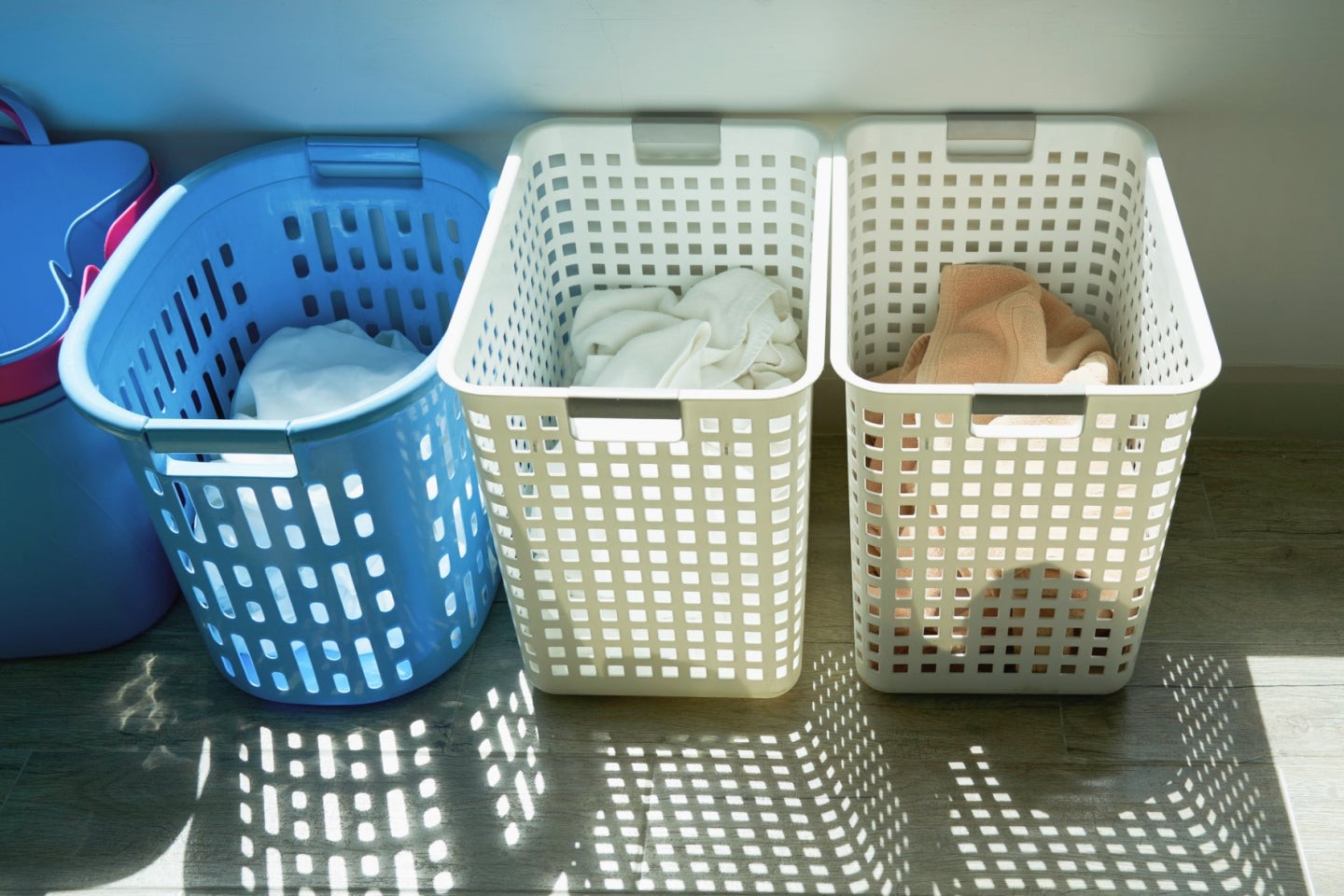
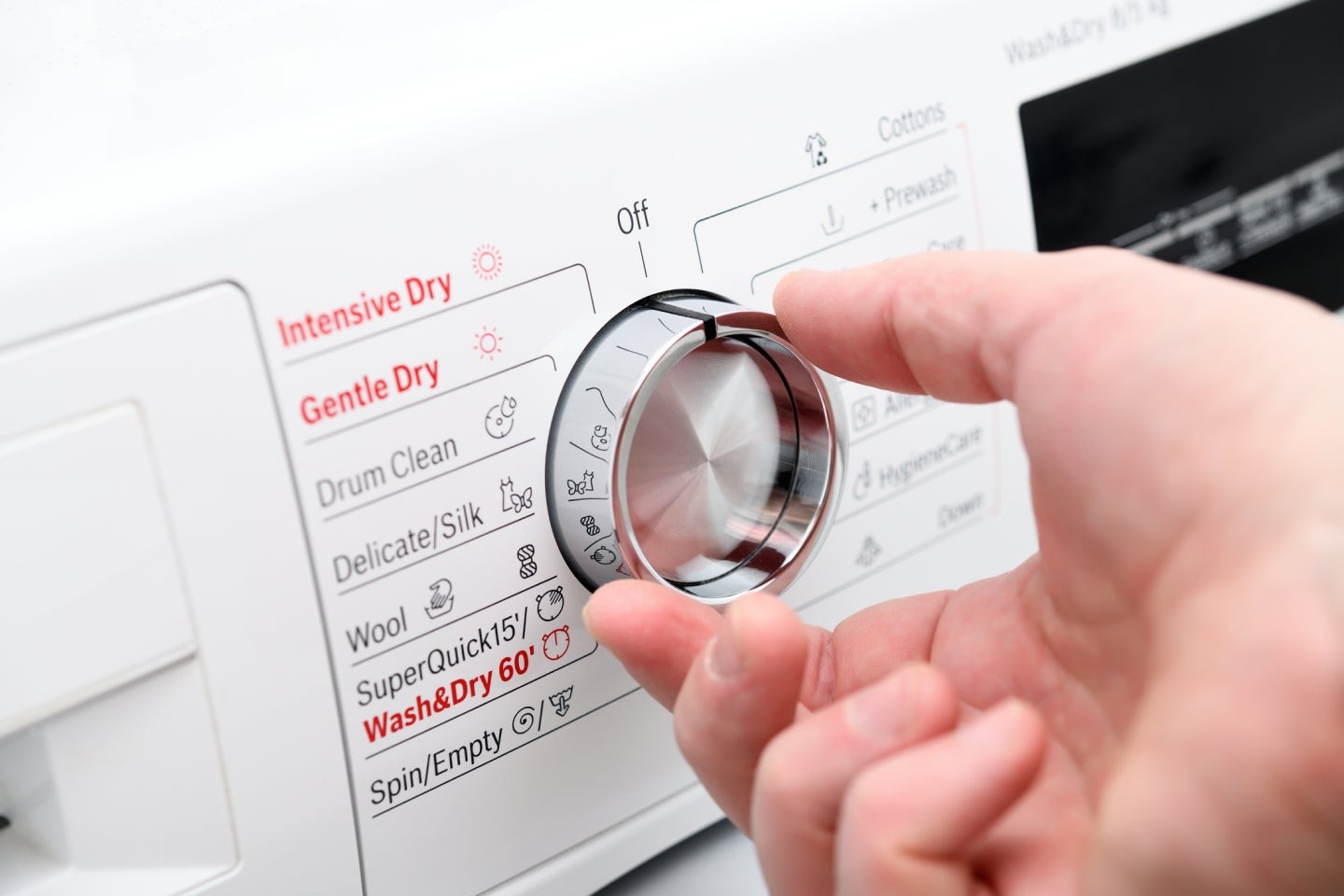
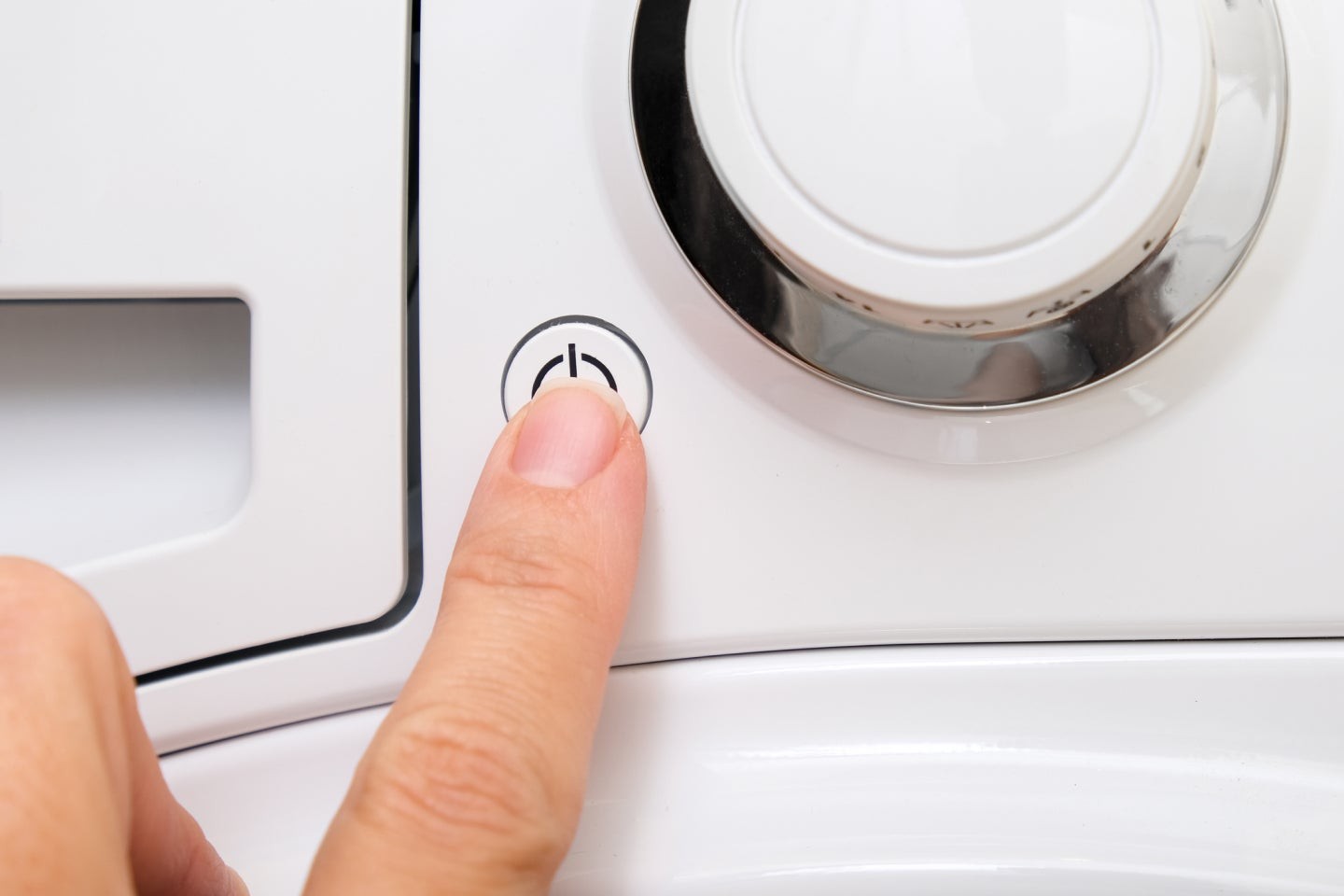
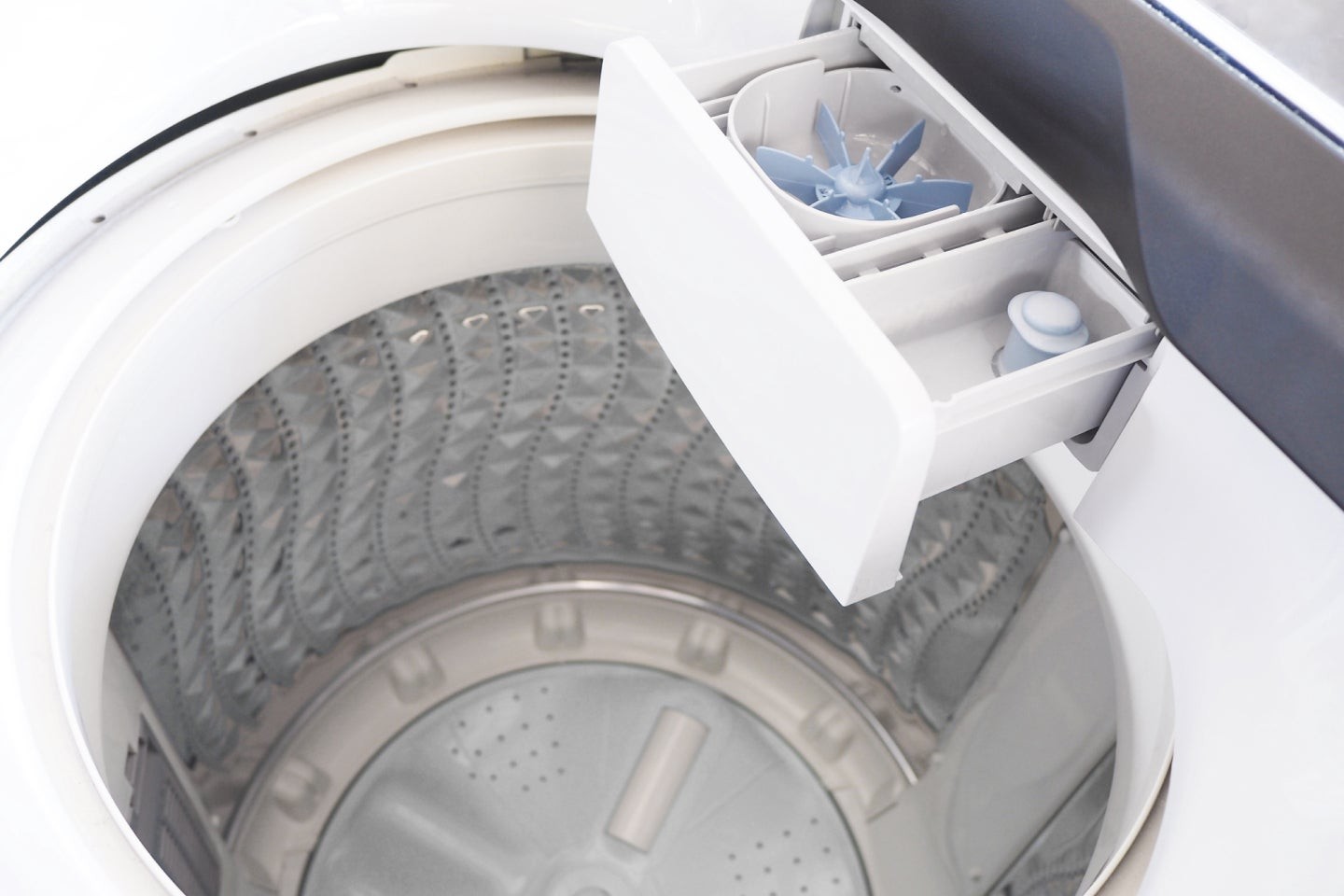

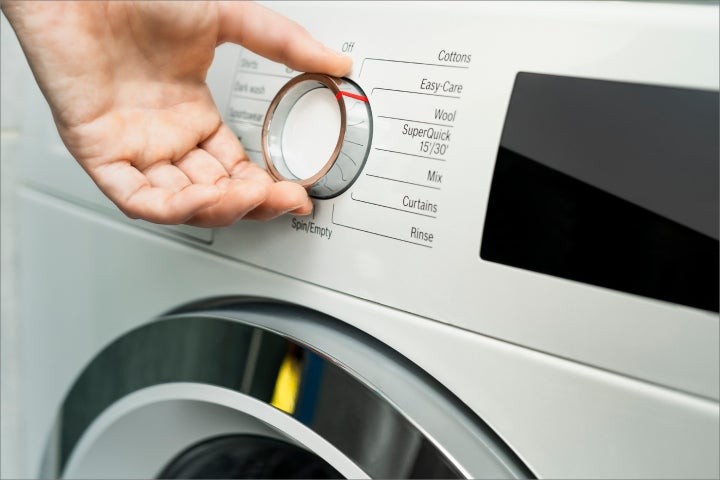

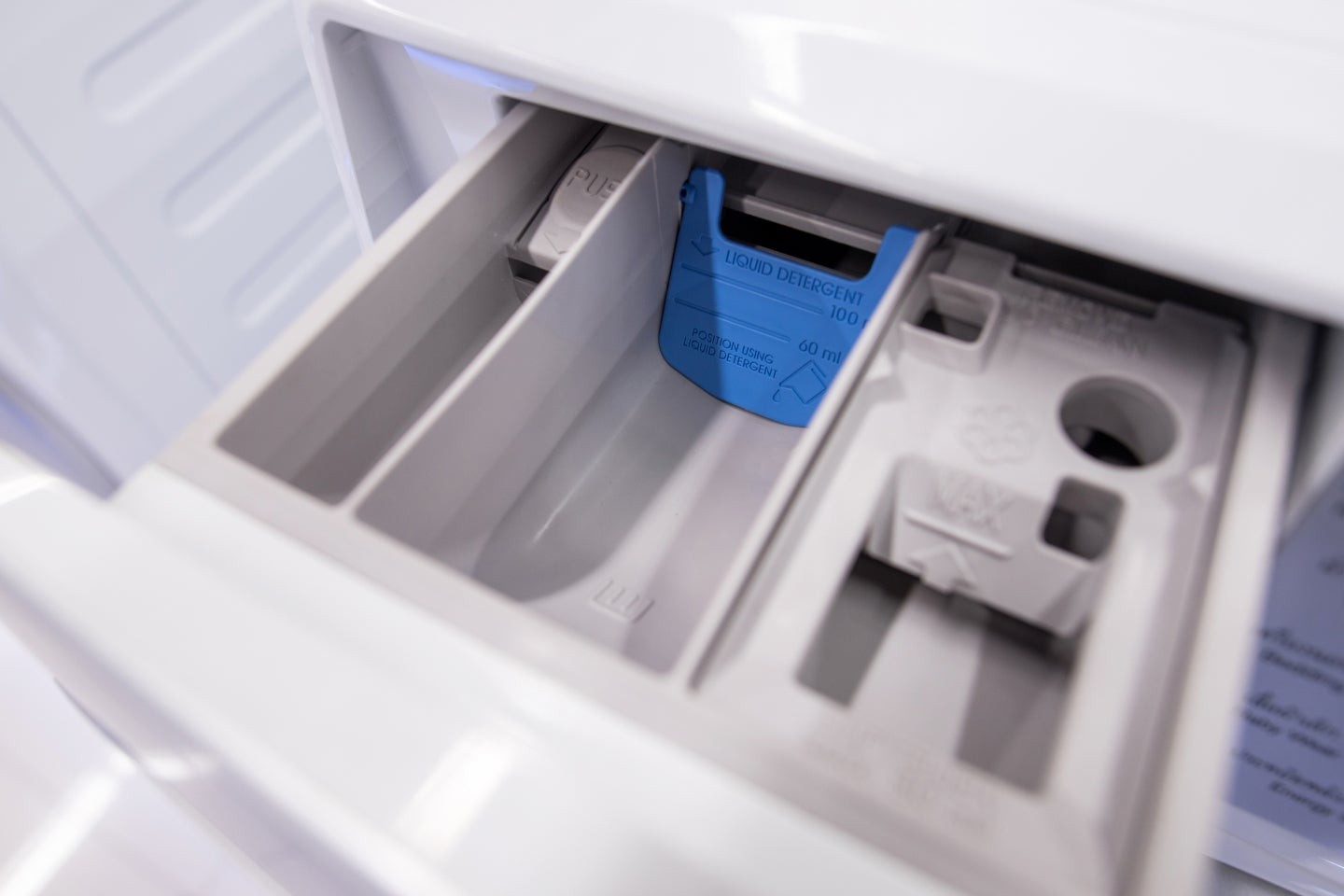

2.2. High-Efficiency (HE) Washing Machines
HE washing machines use less water, requiring a lower concentration of bleach. Always refer to your machine’s user guide for specific instructions.
| Objective | Amount of Bleach |
|---|---|
| Sanitization | 1/4 cup |
| Whitening and Stain Removal (Normal Soil) | Max line in dispenser |
| Whitening and Stain Removal (Heavy Soil) | Max line in dispenser |
2.3. Adjusting for Load Size
If you’re washing a smaller load, reduce the amount of bleach accordingly. For a very small load, you might only need half the recommended amount. Conversely, for an extra-large load, you may need to add a bit more bleach, but be careful not to exceed the maximum recommended amount for your machine type.
2.4. Considerations for Water Hardness
Hard water can reduce the effectiveness of bleach. If you have hard water, you may need to use slightly more bleach to achieve the desired results. Consider using a water softener to improve your laundry’s overall cleanliness and brightness.
3. Step-by-Step Guide to Adding Bleach to Laundry
Here’s a detailed guide on how to properly add bleach to your laundry, ensuring optimal results and fabric safety.
3.1. For Standard Washing Machines
- Sort Laundry: Select bleach-safe fabrics that are white or colorfast.
- Select Cycle: Choose a heavy-duty cycle with hot water and an extra rinse for the best performance.
- Start Washer: Allow the empty washer to begin filling with water.
- Add Detergent and Bleach: When the washer is about half full, add detergent and the appropriate amount of bleach. For best results, dilute the bleach in 1 quart of water before adding it to the wash.
- Add Laundry: Don’t overload the washer; clothing should circulate easily through the water.
3.2. For High-Efficiency (HE) Washing Machines
- Sort Laundry: As with standard machines, select bleach-safe fabrics.
- Select Cycle: Choose a heavy-duty cycle with hot water and an extra rinse.
- Add Laundry: Add clothing loosely, ensuring items have room to tumble freely.
- Fill Dispensers: Add bleach and detergent to the appropriate dispenser compartments.
- Start Washer: Once the cycle starts, the door will lock for safety.
3.3. Hand Washing with Bleach
For hand washing, pretreat stains and clean visible soils first. Then, follow these steps:
- Prepare Solution: Mix 1/4 cup of bleach with 1 gallon of cool water.
- Soak Garments: Fully submerge each garment in the solution for 5 minutes.
- Rinse: Rinse thoroughly to remove the bleach solution.
- Regular Wash: Perform a regular wash following the laundry use directions.
3.4. Pretreating Stains with Bleach
To pretreat stains with bleach, dilute the bleach with water:
- Mix Solution: Mix 1/4 cup bleach with 3/4 cup water.
- Apply to Stain: Apply the solution to the stain.
- Machine Wash: Immediately machine wash the item with detergent and 1/3 cup of Clorox® Disinfecting Bleach.
4. Benefits of Using Bleach in Laundry
Using bleach correctly in your laundry routine offers several significant benefits.
4.1. Whitening
Bleach is highly effective at whitening white clothes, keeping them looking bright and fresh. It works by breaking down the chemical bonds in stains, making them colorless.
4.2. Stain Removal
Bleach can remove tough stains, including those from berries, juice, mud, ketchup, grass, coffee, red wine, and tea. Its oxidizing properties break down these stains, making them easier to wash away.
4.3. Sanitization
Bleach kills 99.9% of germs and bacteria in your laundry, making it an excellent choice for sanitizing items like towels, bedding, and children’s clothes. For sanitization, ensure the laundry contacts the bleach solution for at least 10 minutes.
4.4. Cost-Effective
Bleach is an affordable laundry aid, especially when compared to specialized stain removers or sanitizing products. A small amount of bleach can go a long way in improving your laundry results.
5. Common Mistakes to Avoid When Using Bleach
To ensure you’re using bleach effectively and safely, avoid these common mistakes.
5.1. Using Too Much Bleach
Overusing bleach can weaken fabric fibers, causing them to wear out faster. It can also leave a strong odor on your clothes and may irritate your skin.
5.2. Using Bleach on Unsafe Fabrics
Avoid using chlorine bleach on wool, silk, mohair, leather, spandex, and non-fast colors, as it can damage or discolor these materials. Always check the care labels before using bleach.
5.3. Not Diluting Bleach Properly
Applying undiluted bleach directly to fabric can cause immediate damage and discoloration. Always dilute bleach with water according to the recommended ratios.
5.4. Mixing Bleach with Other Cleaners
Never mix bleach with ammonia or other cleaning agents, as this can create hazardous and potentially deadly fumes.
5.5. Ignoring Colorfastness
Before using bleach on colored fabrics, test for colorfastness by applying a diluted bleach solution to an inconspicuous area. If the color changes, do not use bleach on that garment.
6. Alternative Uses of Bleach in Laundry
Besides whitening, stain removal, and sanitization, bleach can be used in other ways to enhance your laundry routine.
6.1. Freshening Up Your Washing Machine
Regularly cleaning your washing machine with bleach can help prevent mold and mildew growth, keeping it fresh and odor-free. To clean your machine, run an empty cycle with 1/2 cup of bleach and hot water.
6.2. Removing Yellowing from White Clothes
If your white clothes have started to yellow, soaking them in a bleach solution can help restore their brightness. Mix 1/4 cup of bleach with 1 gallon of water and soak the clothes for a few hours before washing as usual.
6.3. Cleaning Laundry Room Surfaces
Bleach can be used to clean and disinfect laundry room surfaces, such as countertops and floors. Always dilute the bleach with water and ensure proper ventilation.
7. Expert Tips for Laundry Bleaching
To maximize the benefits of using bleach in your laundry, consider these expert tips.
7.1. Check Care Labels
Always check the care labels on your garments before using bleach. Look for symbols or instructions that indicate whether bleach is safe to use.
7.2. Test for Colorfastness
Before using bleach on colored fabrics, test for colorfastness to prevent discoloration.
7.3. Use the Right Type of Bleach
Choose the appropriate type of bleach for your laundry needs. Chlorine bleach is best for whitening and sanitizing, while non-chlorine bleach is safer for colored fabrics.
7.4. Follow Dispenser Instructions
If your washing machine has a bleach dispenser, follow the manufacturer’s instructions for adding bleach. This ensures the bleach is released at the correct time during the wash cycle.
7.5. Sanitize Regularly
Sanitize your laundry regularly, especially items like towels, bedding, and workout clothes, to kill germs and bacteria.
8. The Science Behind Bleach and Laundry
Understanding the science behind how bleach works can help you use it more effectively in your laundry routine.
8.1. Oxidation Process
Bleach works through a process called oxidation, where it breaks down the chemical bonds of stains and soils. Chlorine bleach, in particular, contains sodium hypochlorite, which releases oxygen molecules that react with the stain molecules, making them colorless or easier to remove.
8.2. pH Levels
The pH level of bleach is highly alkaline, which contributes to its cleaning and disinfecting properties. This high pH helps to break down organic matter and kill microorganisms.
8.3. Environmental Impact
While bleach is effective, it’s essential to consider its environmental impact. Chlorine bleach can release small amounts of harmful chemicals into the environment. Using bleach responsibly and in moderation can help minimize its impact. Consider using non-chlorine bleach alternatives for a more environmentally friendly option.
9. Bleach Alternatives for Sensitive Fabrics
If you have sensitive fabrics or prefer not to use bleach, several alternatives can provide similar benefits.
9.1. Hydrogen Peroxide
Hydrogen peroxide is a non-chlorine bleach alternative that is gentler on fabrics. It works well for brightening and removing light stains. Use a 3% solution of hydrogen peroxide in your laundry for best results.
9.2. Sodium Percarbonate
Sodium percarbonate is another non-chlorine bleach alternative that releases hydrogen peroxide when dissolved in water. It’s effective for removing stains and brightening clothes.
9.3. Oxygen Bleach
Oxygen bleach contains sodium percarbonate and other ingredients that help to boost its cleaning power. It’s safe for colored fabrics and can be used in both standard and HE washing machines.
9.4. Lemon Juice
Lemon juice is a natural bleaching agent that can help to brighten white clothes. Add 1/2 cup of lemon juice to your laundry for a natural and eco-friendly alternative.
10. Maintaining Fabric Integrity with Bleach
Using bleach correctly can help maintain the integrity of your fabrics, keeping them looking newer for longer.
10.1. Avoid Overuse
One of the best ways to maintain fabric integrity is to avoid overusing bleach. Use only the recommended amount for your machine type and load size.
10.2. Use Cold Water
Washing clothes in cold water can help to preserve fabric colors and prevent shrinking. Bleach is still effective in cold water, so you can get the benefits of bleaching without damaging your clothes.
10.3. Air Dry
Air drying your clothes can help to prevent wear and tear caused by the heat of a dryer. It’s also a more environmentally friendly option.
10.4. Rotate Your Wardrobe
Rotating your wardrobe can help to extend the life of your clothes. By wearing different items regularly, you can prevent any one item from wearing out too quickly.
11. Advanced Techniques for Stain Removal with Bleach
For particularly stubborn stains, consider using these advanced techniques to boost the stain-removing power of bleach.
11.1. Bleach Soaking
Soaking clothes in a bleach solution can help to loosen and remove stubborn stains. Mix 1/4 cup of bleach with 1 gallon of water and soak the clothes for a few hours before washing as usual.
11.2. Bleach Paste
For localized stains, create a bleach paste by mixing bleach with a small amount of water. Apply the paste directly to the stain and let it sit for a few minutes before washing.
11.3. Steam and Bleach
Using steam in combination with bleach can help to lift stains from fabrics. Steam the stained area before applying a diluted bleach solution.
12. Addressing Common Bleach-Related Issues
Even with careful use, you may encounter some common issues when using bleach in your laundry. Here’s how to address them.
12.1. Bleach Spots
If you accidentally get bleach on colored fabrics, it can cause discoloration or bleach spots. To minimize the damage, rinse the area immediately with cold water.
12.2. Strong Bleach Odor
If your clothes have a strong bleach odor after washing, try rinsing them again with plain water. You can also add a cup of white vinegar to the rinse cycle to help neutralize the odor.
12.3. Fabric Damage
If you notice that your fabrics are becoming weak or damaged after using bleach, reduce the amount of bleach you’re using or switch to a gentler alternative.
13. DIY Bleach Solutions for Laundry
Creating your own bleach solutions can save you money and give you more control over the ingredients in your laundry routine.
13.1. Homemade Bleach Booster
Mix equal parts of hydrogen peroxide, lemon juice, and white vinegar for a homemade bleach booster that can brighten white clothes and remove stains.
13.2. Natural Bleach Alternative
Combine sodium percarbonate with essential oils like lemon or tea tree for a natural bleach alternative that is safe for colored fabrics.
13.3. Bleach-Free Stain Remover
Create a paste of baking soda and water for a bleach-free stain remover that can lift stains without damaging fabrics.
14. Eco-Friendly Bleach Options
If you’re looking for eco-friendly bleach options, several products on the market can help you reduce your environmental impact.
14.1. Plant-Based Bleach
Plant-based bleach is made from natural ingredients and is biodegradable, making it a more sustainable option.
14.2. Oxygen-Based Cleaners
Oxygen-based cleaners use sodium percarbonate to release oxygen and lift stains, providing a more environmentally friendly alternative to chlorine bleach.
14.3. Concentrated Bleach
Using concentrated bleach can help to reduce packaging waste and lower your carbon footprint.
15. Best Practices for Using Bleach in Commercial Laundry Settings
In commercial laundry settings, using bleach efficiently and safely is crucial for maintaining high standards of cleanliness and hygiene.
15.1. Automated Dispensing Systems
Using automated dispensing systems ensures that the correct amount of bleach is added to each load, preventing overuse and fabric damage.
15.2. Regular Maintenance
Regularly maintaining your laundry equipment can help to prevent leaks and ensure that bleach is dispensed properly.
15.3. Staff Training
Training your staff on the proper use of bleach and safety precautions is essential for maintaining a safe and efficient laundry operation.
16. The Role of Bleach in Medical Laundry
In medical laundry settings, bleach plays a critical role in disinfecting and sanitizing linens to prevent the spread of infections.
16.1. Compliance with Regulations
Medical laundry facilities must comply with strict regulations regarding the use of bleach and other disinfectants to ensure patient safety.
16.2. High-Temperature Washing
Washing linens at high temperatures in combination with bleach can help to kill even the most resistant microorganisms.
16.3. Monitoring and Testing
Regular monitoring and testing of laundry processes can help to ensure that bleach is being used effectively and that linens are properly disinfected.
17. Innovations in Bleach Technology
Recent innovations in bleach technology have led to the development of more effective and environmentally friendly products.
17.1. Stabilized Bleach Formulas
Stabilized bleach formulas have a longer shelf life and are less likely to degrade over time, ensuring consistent performance.
17.2. Enzyme-Enhanced Bleach
Enzyme-enhanced bleach combines the power of bleach with enzymes that help to break down stains and soils, providing superior cleaning performance.
17.3. Color-Safe Bleach Alternatives
New color-safe bleach alternatives are being developed that can effectively remove stains and brighten clothes without damaging colored fabrics.
18. FAQ About Bleach and Laundry
Here are some frequently asked questions about using bleach in your laundry.
18.1. Can I use more than ¼ cup in the wash cycle for really dirty laundry?
Yes, it’s a good idea to adjust the amount of bleach to the soil level of your laundry. Be careful not to overfill your dispenser, which can cause it to dispense bleach too early.
18.2. Can I pretreat laundry stains with full-strength bleach?
No, never use bleach full strength to treat any soft or hard surface. Bleach should always be diluted with water before it contacts fabric.
18.3. Can I use lemon scented regular bleach to sanitize my laundry?
No. Only non-fragranced EPA-registered bleach products can be used to sanitize laundry.
18.4. Can I use Clorox® Splash-Less® Bleach to sanitize my laundry?
Yes, you can. Check your bottle and make sure it was recently purchased and the label includes a germ kill claim.
18.5. I bought my bleach at a warehouse store and it has a different name. Can I use it instead?
Yes. Depending on where you buy your bleach, you could also use any of the following: Clorox® Bleach, Clorox® Regular Bleach, Clorox® Performance Bleach, and Clorox® Germicidal Bleach.
18.6. What should I do if I spill bleach on my clothes?
If you spill bleach on your clothes, immediately rinse the affected area with cold water. If the bleach has caused discoloration, there’s unfortunately no way to reverse the damage.
18.7. Can I use bleach in my septic system?
Using small amounts of bleach in your laundry is generally safe for septic systems. However, avoid using excessive amounts, as it can disrupt the balance of bacteria in the system.
18.8. How long does bleach last?
Bleach has a shelf life of about 6 months to 1 year. Over time, it can lose its effectiveness, so it’s best to use it within this timeframe.
18.9. Can I use bleach to remove mold from clothes?
Yes, bleach can be used to remove mold from clothes. Soak the clothes in a solution of 1/4 cup bleach per gallon of water for 5-10 minutes, then wash as usual.
18.10. Is it safe to mix bleach with vinegar?
No, it is not safe to mix bleach with vinegar. Mixing these two substances can create toxic chlorine gas, which can be harmful to your health.
19. Conclusion: Maximizing Laundry Results with Bleach
Knowing How Much Bleach To Add To Laundry is essential for achieving optimal results. Whether you’re aiming to whiten, remove stains, or sanitize, following the guidelines provided in this comprehensive guide will help you achieve the best possible outcome while protecting your fabrics. Remember to always prioritize safety and follow the recommended precautions to ensure a successful laundry experience.
Are you struggling to get the perfect laundry results? Do you have persistent stains that you can’t remove? At HOW.EDU.VN, our team of over 100 world-renowned Ph.D. experts is here to provide personalized advice and solutions. We understand the challenges you face and offer tailored guidance to help you achieve the best possible outcomes. Contact us today to connect with an expert and transform your laundry routine.
Address: 456 Expertise Plaza, Consult City, CA 90210, United States
WhatsApp: +1 (310) 555-1212
Website: how.edu.vn
